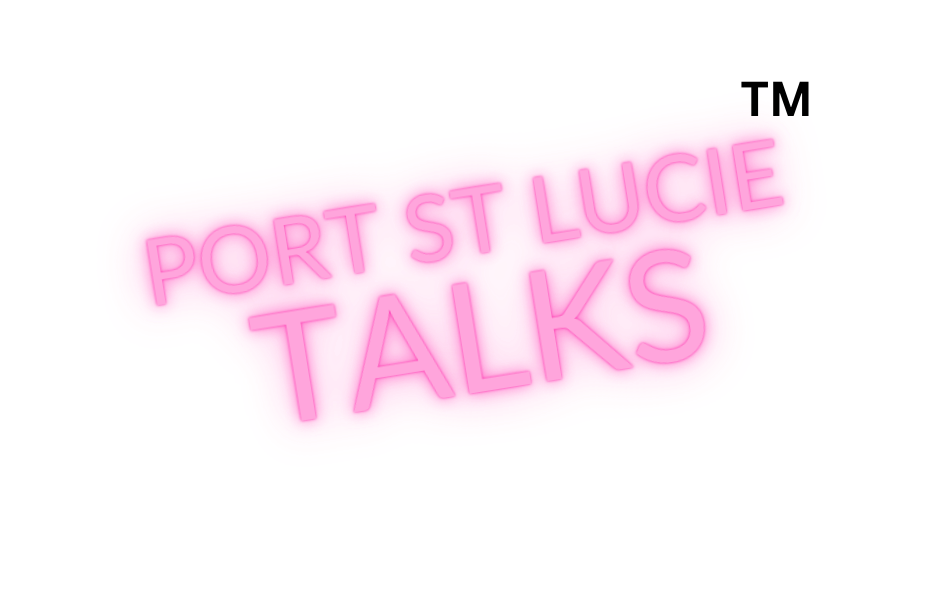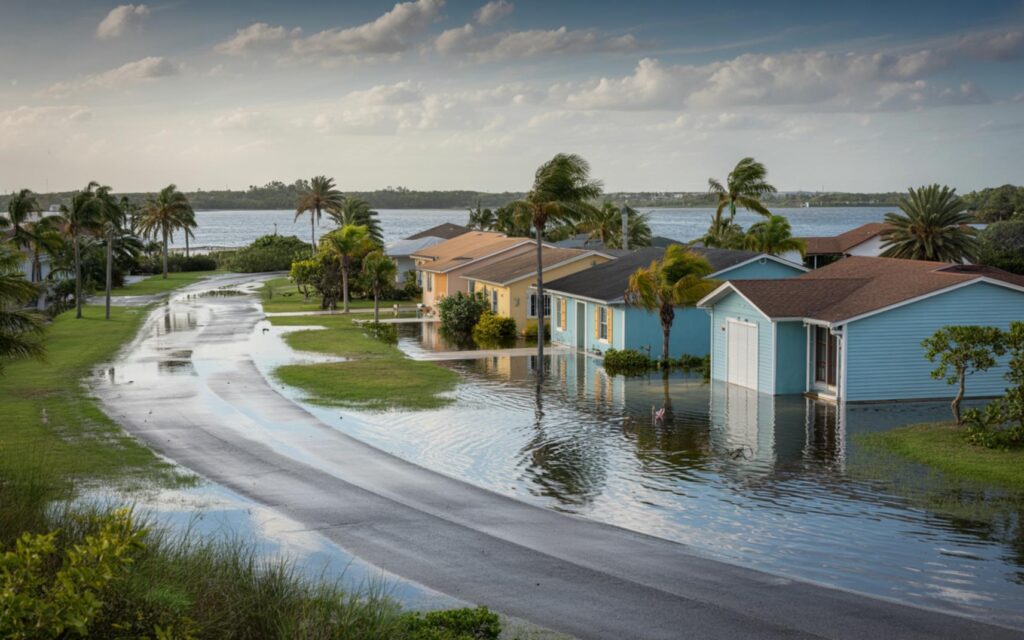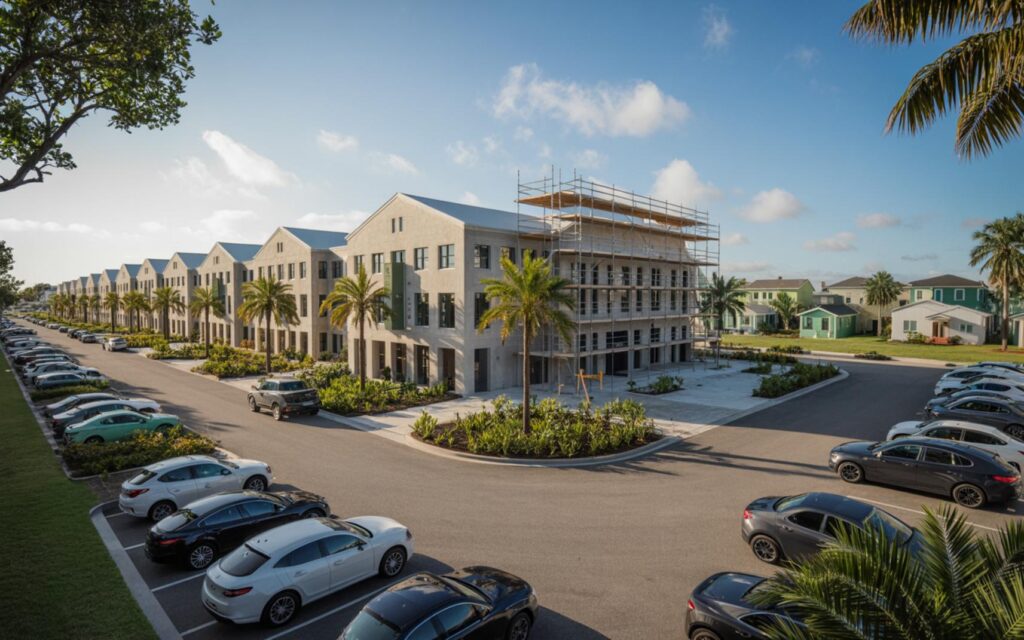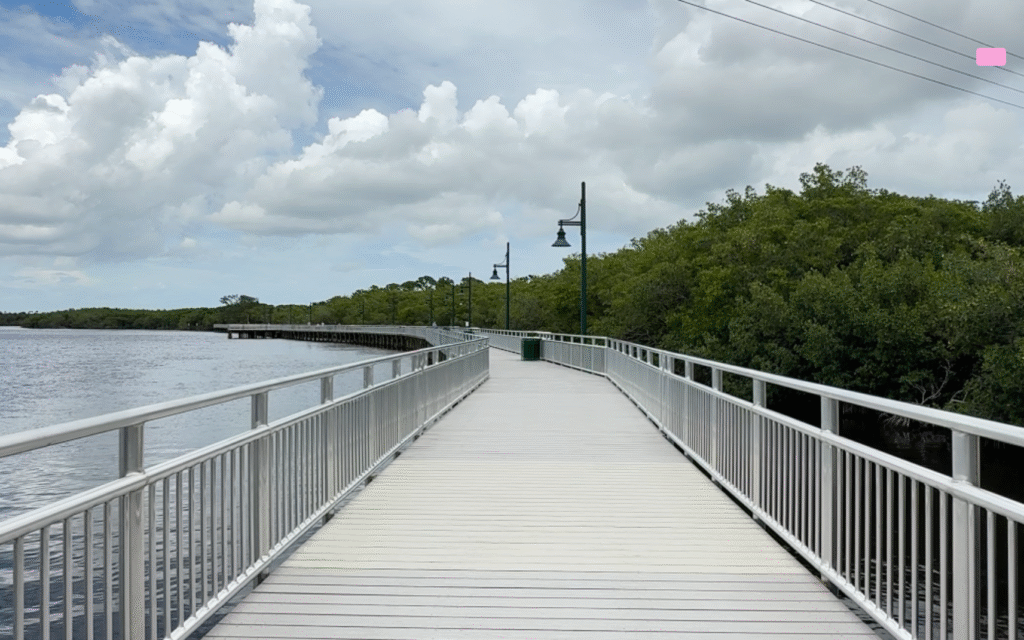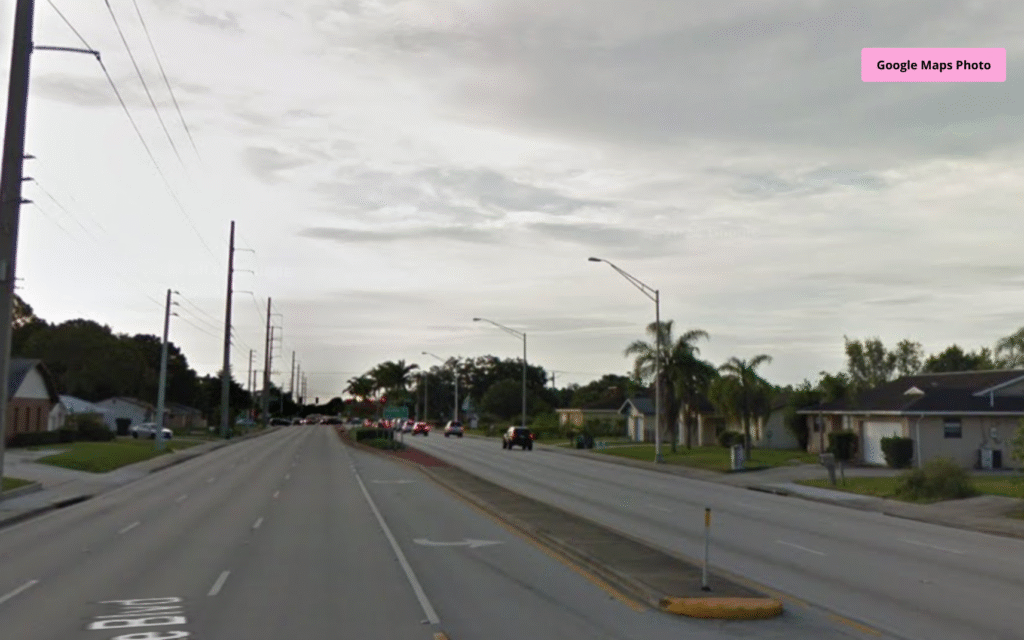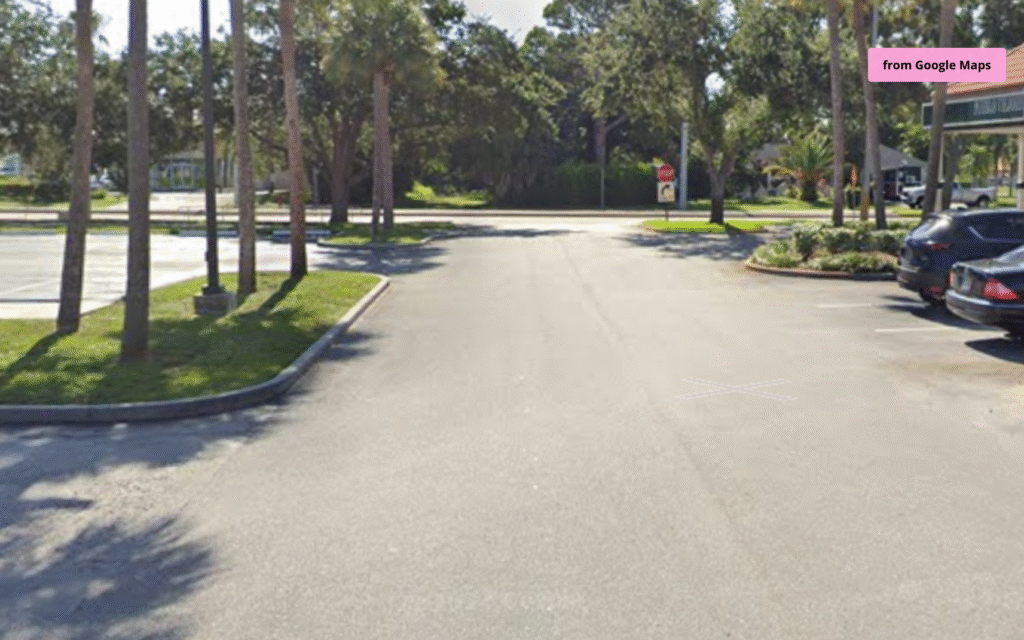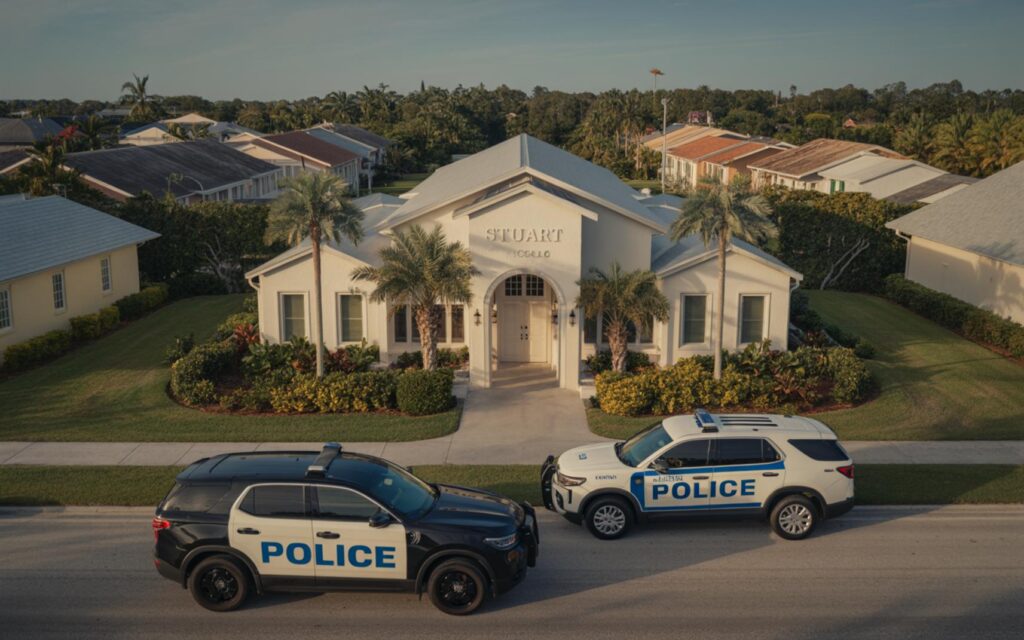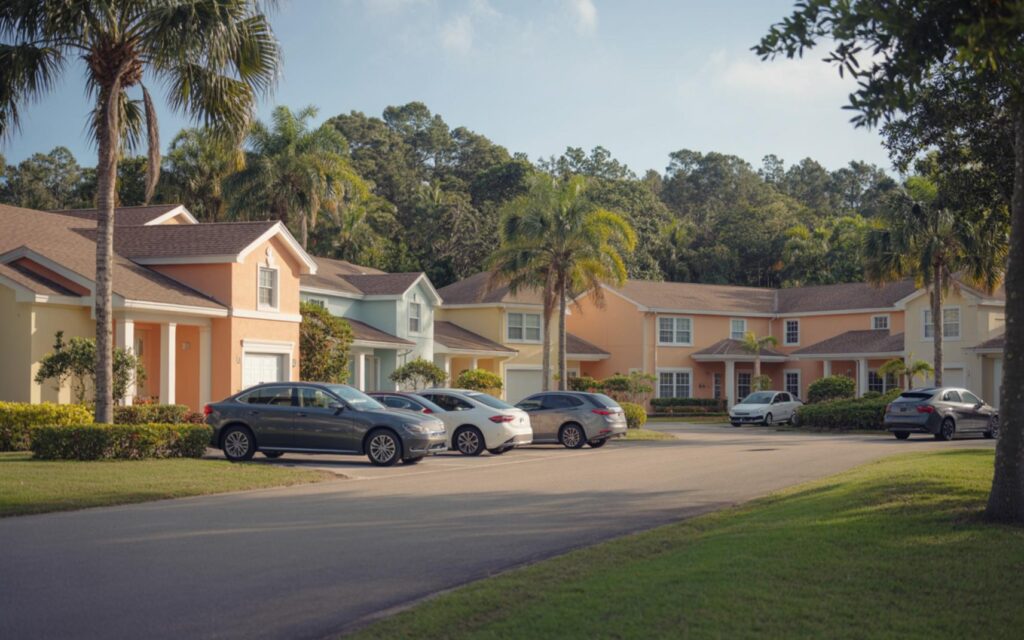Coastal flooding along Florida’s east coast has become a growing concern, with the region now experiencing a significant rise in high tide flood days and sea levels. The increase in coastal flooding is affecting communities, infrastructure, and local ecosystems, highlighting the urgent need for adaptation and mitigation efforts.
Coastal Flooding Along Florida’s East Coast: Key Trends
According to the National Oceanic and Atmospheric Administration (NOAA), coastal flooding events have sharply increased along Florida’s east coast. Many locations now experience up to 18 high tide flood days annually, marking a nearly 500% increase compared to the year 2000. This trend is closely linked to ongoing sea level rise and changing weather patterns.
Sea levels across Florida have risen by up to 8 inches since 1950, with the rate of increase accelerating in recent decades. During flood events, tides can run about 0.5 to 1 foot higher than the previous week, causing water levels to reach 2 to 3 feet above normally dry ground. In some cases, such as along the St. Johns River, water can crest around 3.6 feet, leading to canals spilling into yards and low-lying areas.
Factors Driving Increased Coastal Flooding
Coastal flooding is driven by a combination of tidal forces, wind, sea level rise, and storm events. Hurricanes and tropical systems remain major contributors to severe flooding along the Atlantic coast. However, even in the absence of storms, other factors can elevate flood risk.
Breezy Winds and High Tides
Breezy winds, especially when combined with high tides, can push seawater further inland. According to the National Weather Service, these conditions often lead to minor flooding, even without heavy rainfall. Persistent winds can maintain elevated water levels for several days, increasing the risk to homes and businesses near the shoreline.
Rip Currents and Surf Hazards
Rip currents are a frequent hazard along Florida’s east coast, particularly during periods of strong onshore winds and high surf. The National Weather Service reports that these currents pose risks to swimmers and beachgoers, especially when coastal flooding coincides with elevated surf conditions.
Sea Level Rise and Land Subsidence
Experts from the Florida Department of Environmental Protection indicate that accelerating sea level rise is a key driver of increased coastal flooding. The combination of rising seas, land subsidence, and severe weather is making flood events more frequent and impactful for coastal communities.
Current Flooding Conditions and Outlook
A coastal flood warning and advisory is currently in effect for parts of Florida’s east coast, with minor flooding expected to continue into early next week. The National Weather Service forecasts breezy conditions to persist, maintaining an elevated flood risk along the coastline.
According to NOAA, tides during this period may be 0.5 to 1 foot higher than average, contributing to water levels that reach 2 to 3 feet above typical dry ground. The St. Johns River is expected to remain at moderate flood stage, with canals and low-lying areas at risk for additional flooding.
Atlantic Hurricane Season and ENSO Conditions
The Atlantic hurricane season is forecast to be above normal, increasing the likelihood of flooding events in the coming year. With ENSO-Neutral conditions now present, the influence of El Niño or La Niña on seasonal weather and flooding patterns is reduced. This means local factors such as tides, wind, and storm activity will play a larger role in determining flood risk.
Impacts on Communities and Infrastructure
Coastal communities along Florida’s east coast are increasingly vulnerable to flooding. Floodwaters affect not only homes and businesses but also transportation networks, utilities, and natural habitats. According to the Florida Division of Emergency Management, repeated flooding can disrupt daily life and cause long-term damage to infrastructure.
- Homes and Businesses: Water intrusion can damage structures and lead to costly repairs.
- Transportation: Flooded roads and bridges can disrupt travel and emergency response.
- Utilities: Power outages and water supply interruptions are common during severe flood events.
- Natural Habitats: Saltwater intrusion can harm wetlands and coastal ecosystems.
Long-Term Flood Risk and Adaptation
Projections from the Southeast Florida Regional Climate Change Compact suggest that flood risk will continue to rise in the coming decades. More people, infrastructure, and ecosystems will be exposed to flooding as sea levels increase and weather patterns evolve.
Local governments and agencies are developing adaptation and mitigation strategies to address these challenges. Efforts include improving stormwater management, elevating critical infrastructure, and restoring natural barriers such as dunes and wetlands.
Seasonal changes, such as the transition to fall, can bring temporary relief from heat but do not eliminate flood risks associated with tides and wind. Ongoing planning is underway to support coastal communities as they respond to these evolving threats.
Frequently Asked Questions About Coastal Flooding Along Florida’s East Coast
What is causing the increase in coastal flooding along Florida’s east coast?
Coastal flooding is increasing due to rising sea levels, changing weather patterns, and more frequent severe storms. Breezy winds and high tides also contribute to periodic flooding, even without heavy rainfall.
How much has sea level risen in Florida since 1950?
Sea levels across Florida have risen by up to 8 inches since 1950, with the rate of rise accelerating in recent decades. This increase is making coastal flooding more common and severe.
Are there more high tide flood days now compared to the past?
Yes, some locations along Florida’s east coast now experience up to 18 high tide flood days each year. This is a nearly 500% increase compared to the year 2000.
Can you swim safely during coastal flood events?
Swimming during coastal flood events can be dangerous due to strong rip currents and elevated surf. The National Weather Service advises caution and recommends checking local advisories before entering the water.
Where are the most vulnerable areas to coastal flooding in Florida?
Low-lying coastal communities along Florida’s east coast are most vulnerable to flooding. Areas near rivers, canals, and the shoreline face the highest risk, especially during high tide and storm events.
